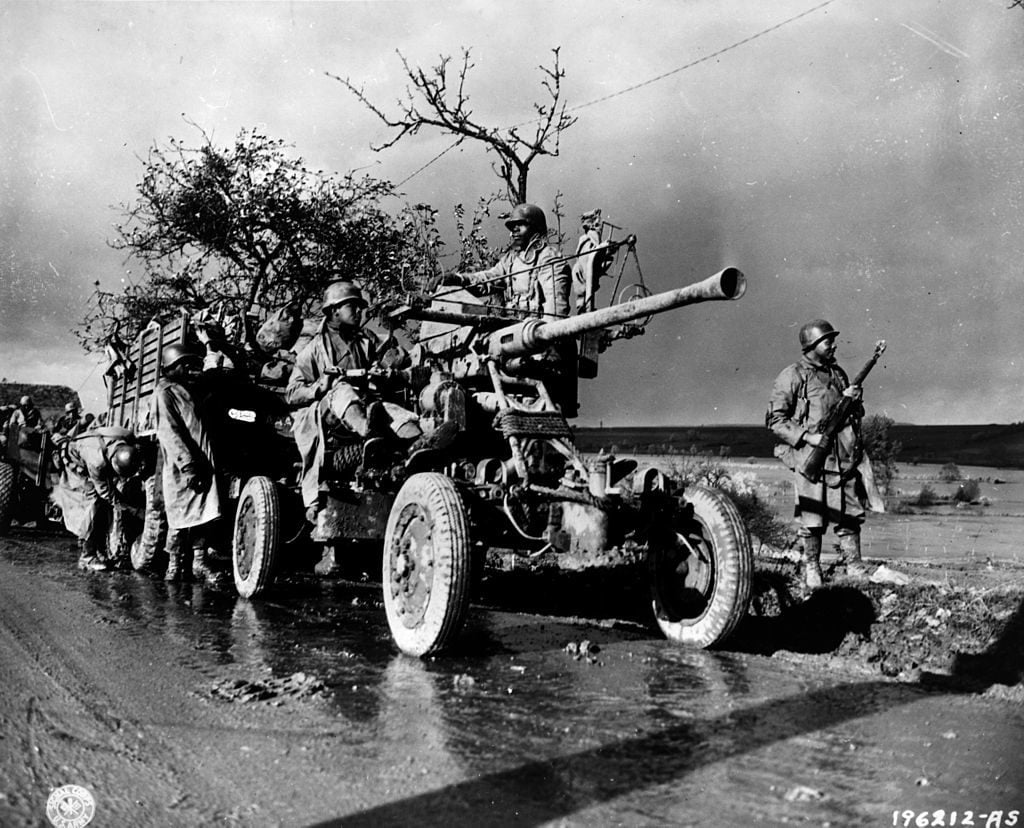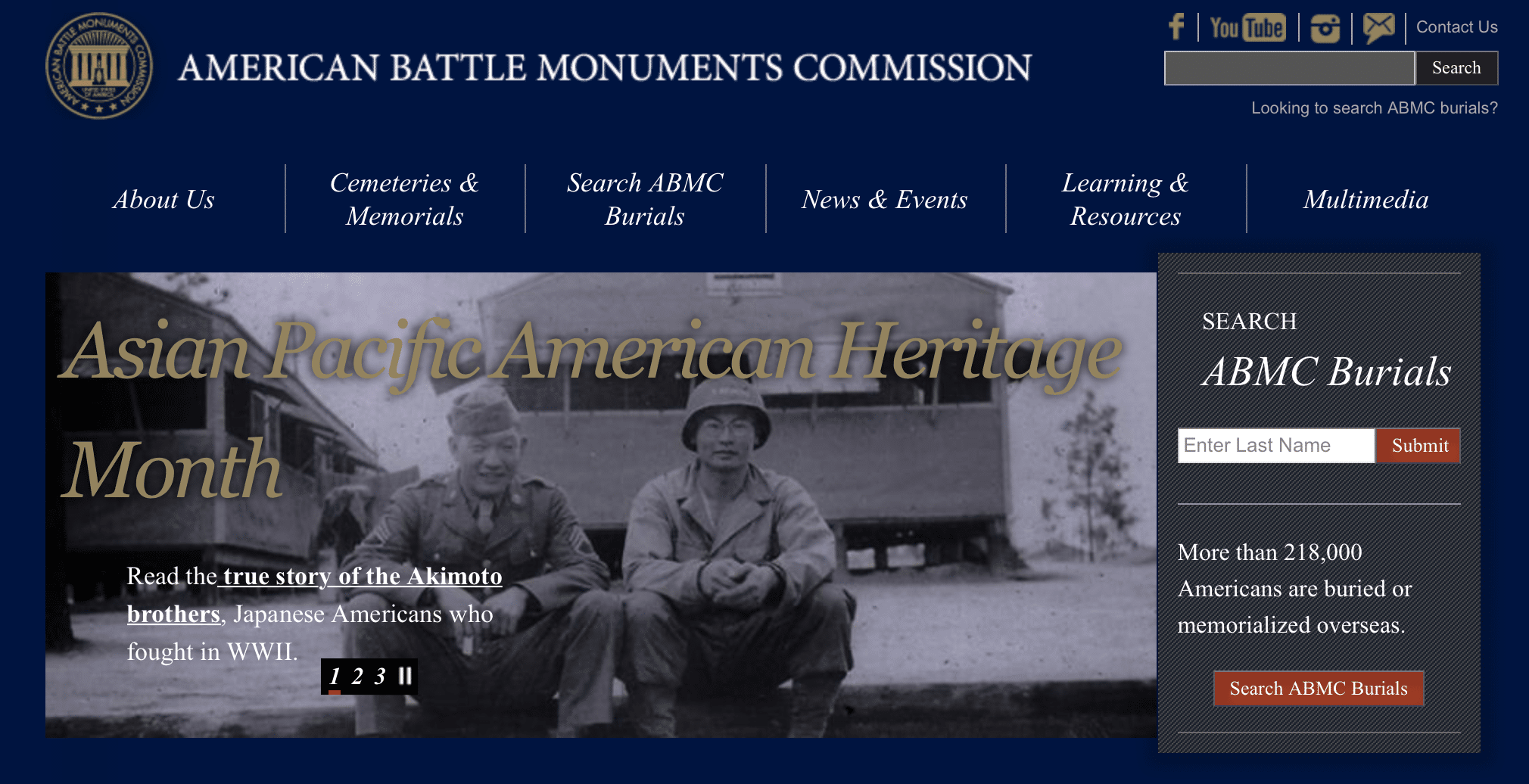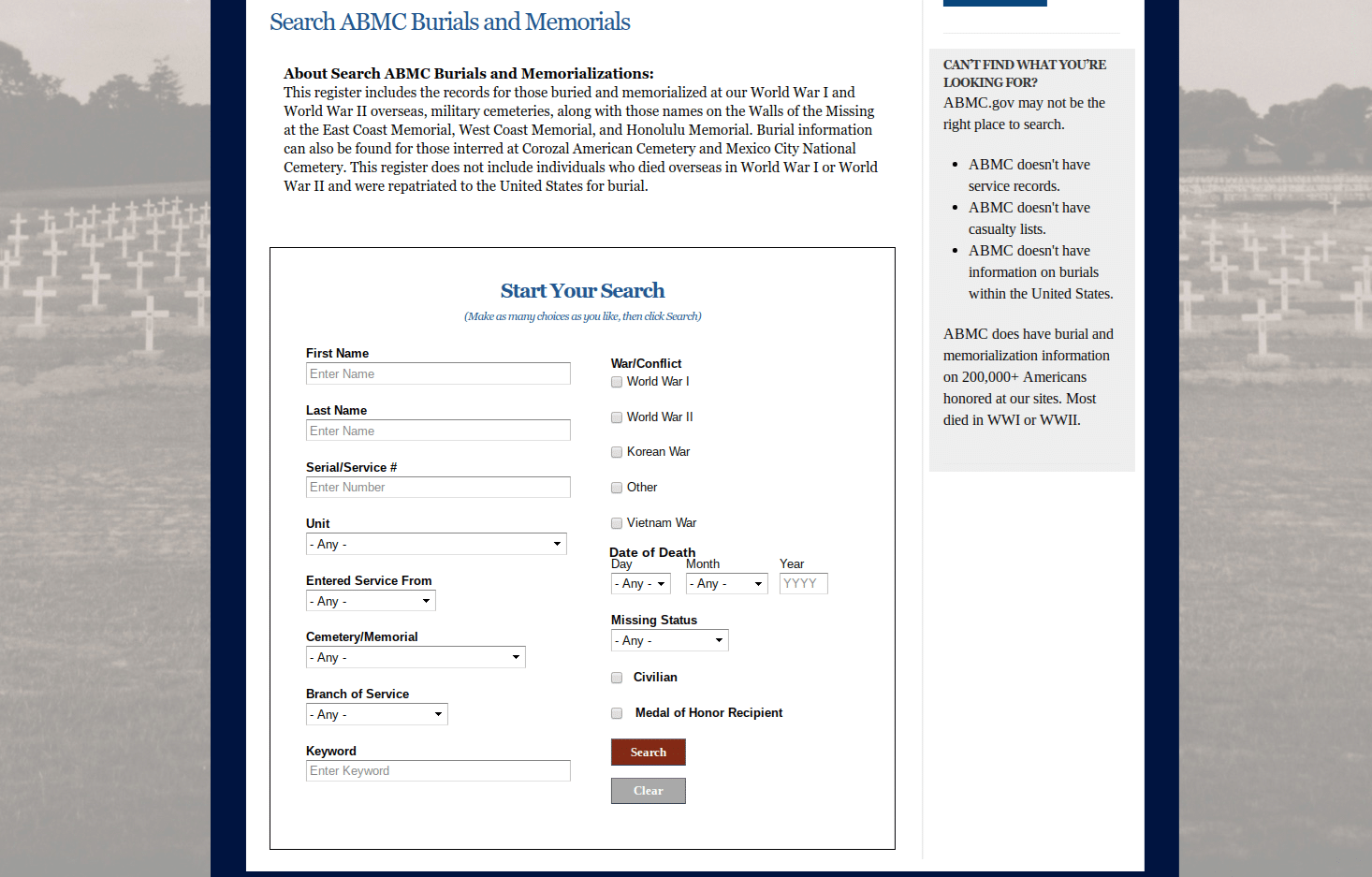By Tony Bandy
Looking for information about a family member who passed away while serving in a conflict can certainly present unique challenges for the family history researcher. In addition to the sense of loss that comes with knowing your family member’s life ended too soon, the act of finding the true story of their service can be daunting task, especially if the loved one’s remains were never returned to the United States.
So, how do you take those first steps when trying to unearth information about one of your ancestors who lived and died during wartime? While government information from organizations like the Veterans Administration are often the first places we think to look, there are other resources that may be just as useful in your search.
The American Battle Monuments Commission is one such resource. With online reports, extensive search options on over 218,000 personnel, maps and lists of various military cemeteries, it’s certainly worth investigating.
Established as an act of Congress in 1923, following the cessation of hostilities from World War One, the American Battle Monuments Commission (ABMC) is a separate agency of the federal government responsible for maintaining military cemeteries and records of burials.
The ABMC provides extensive online access to digital burial records and other service related details – making for a quick and effective tool for gathering more information about your ancestors who may have died in the line of duty and who were not returned to the US for burial.
From the ABMC:
This register includes the records for those buried and memorialized at our World War I and World War II overseas, military cemeteries, along with those names on the Walls of the Missing at the East Coast Memorial, West Coast Memorial, and Honolulu Memorial. Burial information can also be found for those interred at Corozal American Cemetery and Mexico City National Cemetery. This register does not include individuals who died overseas in World War I or World War II and were repatriated to the United States for burial.
Some burial records for the Korean and Vietnam Wars and other conflicts are also included.
For information and details on an individual, searching the online indexes is the best method. From the home page, use the box on the right-hand side of the screen to do a quick search using only a surname OR select the red ‘Search ABMC Burials’ button to start a more advanced search and include details like service serial number, date of death, attached unit or even branch of service:
Once you hit search, results are returned in sort-able, alphabetical order. From here you can view individual records or download the entire list of results for easy importation into a spreadsheet or plain text editor.
The ability to download the entire list can be a nice feature, especially if you are looking for more than one family members who may have served.
Once you have found your ancestor’s information, related details are offered such as date of death, burial location, awards, and other individual facts. You will also find options to print out a formatted certificate with elements of the individual’s records. This can be handy if you are maintaining a family notebook or family tree with multimedia elements.
The American Battle Monuments Commissions site also features background information on their physical locations (choose the Cemeteries & Memorials link). The ABM has several physical locations ranging from the Aisle-Marne American Cemetery in France, Flanders Field American Cemetery, the Midway Memorial Marker, the Sommepy American Monument and many others. You can filter by country or map to quickly drill down to the information you need, or consult the A-Z options listed on the page. The map option is a quick way to use this feature – with built-in location information, images, and in many cases historical information such as booklets and more.
Within the ABMC’s site you can also find extensive details on conflicts themselves – including oral histories, background information, images/multimedia, etc. This feature can be effective in fleshing out the details of a family member’s service at a particular location or within a certain unit.
The subject of our ancestors in wartime is never an easy thing for family researcher’s to tackle. However, by using the tools available from the American Battle Monuments Commission you just might find a clear path to get started on your journey.
Freelance writer, family researcher, and librarian/historian, Tony Bandy can be found at Adventures in History.
Image at top: Battery A of the 452nd AAA Battalion, November 9, 1944. Members of an artillery unit stand by and check their equipment while the convoy takes a break. Photograph shows African American artillery troops on march in Belgium. Library of Congress via Wikipedia



